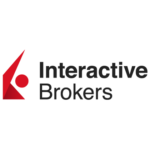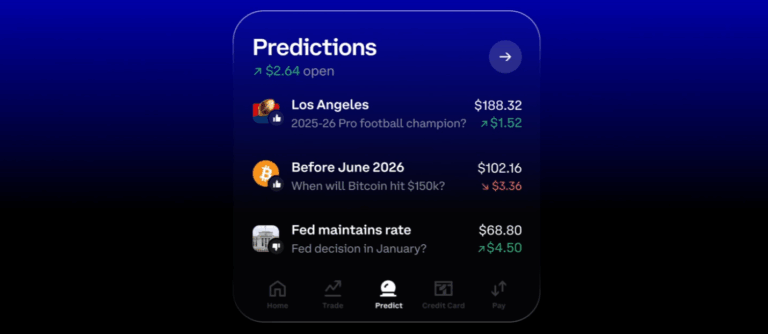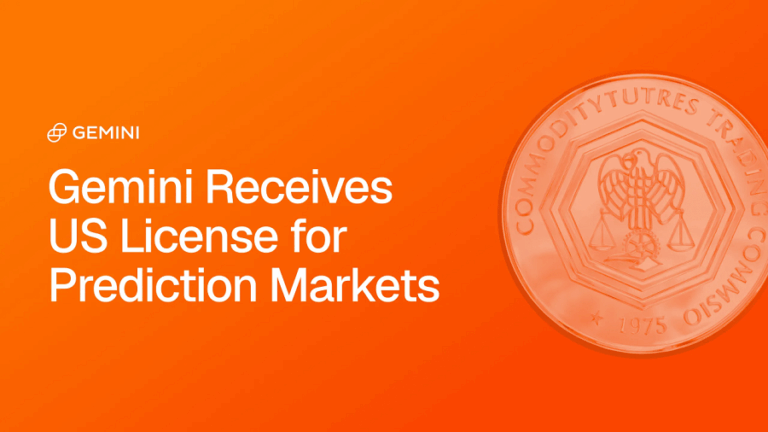-
 Checked By
Richard Berry
Checked By
Richard Berry
- Updated
The best options brokers in the US like Interactive Brokers provide direct market access to on exchange options contracts on major exchanges like CME, CBOT and ICE so that traders can speculate on indices, stocks, FX, bonds and commodities.
| Name | Logo | GMG Rating | Customer Reviews | Commission | Min Deposit | CTA | Feature | Expand |
|---|---|---|---|---|---|---|---|---|
|
GMG Rating |
Customer Reviews 4.5
(Based on 1,330 reviews)
|
Commission $0.15 to $0.65 |
Min Deposit $2,000 |
Features:
|
Interactive Brokers Options Trading Review Provider: Interactive Brokers Options Trading Verdict: When it comes to advanced options trading, Interactive Brokers outshines the competition with its unbeatable commissions, global market access, cutting-edge platforms, and tailored trading permissions. Make the smart choice and unlock your full trading potential with IBKR Advantage. Compare the facts, and see why Interactive Brokers is the clear winner for advanced options traders worldwide. Summary A great choice for US options traders who want access to a huge range of markets and the ability to create complex options strategies.
Pros
Cons
Overall4.4 |
❓Here’s how we selected the US’s best options brokers:
- Hands-on analysis: Our review team tests each options broker using real money for a genuine trading experience
- Stand-out features: We compare what sets each options platform apart to highlight their unique strengths
- Customer feedback: Over 30,000 votes from the Good Money Guide annual awards help shape our ratings
- Exclusive interviews: We speak directly with options broker CEOs and senior management to get their insights
- Our process: Find out more about how we choose and rank providers on our How We Rate page
What is Options Trading In The US?
In stock trading, buying ‘options’ from US options brokers effectively gives you the right to buy or sell a batch of stock in a certain price.
The ‘option’ is a contract to either buy or sell some stock at a later date, and instead of actually buying or selling the stock, you merely pay a fee to hold the contract for the duration of its life.
This means, instead of buying 100 shares for $1000, you buy the option for 100 shares for $100.
Buying the right to buy stock is called a ‘call’. Rather than actually buying the stock outright, which could cost a lot of money, buying the ‘right’ to buy that stock at the same price later on is a kind of insurance. It means that you could end up buying that stock at the same price a few months later when it’s actually worth a lot more.
Conversely, buying the right to sell a stock is called a ‘put’. If you believe the stock is going to lose value, you can sell someone else the ‘option’ to buy the stock at a given price, and get rid of it a few months later for more than it is now worth. This means that the person buying the stock takes the loss when they are obligated to buy stock that is worth less, while you get to take the money the stock was worth when you made the deal.
How To Choose An Options Broker
There are lots of choices out there when it comes to choosing a US options broker, which is good for consumers, because there are lots of good offers available.
Firstly, you should make sure the platform they offer is comprehensive and easy to use, and that it has the range of facilities you’d like.
If you’re big on mobile banking, for example, you’ll want a broker that supports trading on mobile devices. You should also take advantage of free learning opportunities if you can: The best brokers will offer courses and tutorials to help you out.
Choosing the right options broker is critical for maximizing profits and minimizing options trading costs. Here’s what to watch for:
-
Commissions & Fees
Look for tiered pricing models, low per-contract fees, and zero account minimums. Interactive Brokers and Tastytrade are highly competitive in this space. Both charge for options trading on a per lot basis, but as IBKR focusses on discounts for high volume traders, if you an active options trader it's worth switching to IBKR to save on fees.
-
Tools & Platforms
Advanced platforms like thinkorswim (TD Ameritrade) and Tastytrade offer powerful charting, strategy builders, and live volatility data. IBKR however, also has an ever evolving suite of options trading tools for beginner and advanced options traders.
-
Education & Support
For beginners, Interactive Brokers provides a huge amount of educational material around options trading. TastsyTrade has one of the best YoutTube channels for options trading ideas and platforms like E*TRADE and Fidelity provide strong options education, demo accounts, and webinars.
-
Mobile Experience
Options trading on the go? Prioritize brokers with responsive, intuitive apps like Robinhood or Webull, though beware of limited features on their desktop versions. Interactive Brokers has an excellent app for creating and executing options trading strategies.
-
Execution Speed
Millisecond execution matters when trading multi-leg or short-dated options.
What to avoid!
If you are trading options in America, there are a few things you should try and avoid when picking an options trading platform:
Inactivity or platform fees – if you don’t trade you’ll be charged until your account balance reaches $0
Poor risk management tools – never trade with an options broker that offers too much margin. Options trading can result in losses that exceed your account balance so always trade within your limits.
No direct access routing – in the US options trading is done on exchange where you can work buy and sell orders directly on the order book. Avoid going with a broker that does not offer direct access as you’ll get worse pricing, especially if you are an active options trader.
Best Options Trading Strategies for 2026
Options offer flexibility that few other financial instruments can match—but with that flexibility comes complexity. Whether you’re looking to hedge, speculate, or generate income, having a clear strategy is key to trading options effectively. This guide walks through the most popular options strategies for beginners and intermediate traders, breaking down how they work, when to use them, and what to watch out for.
We’ll also explain the pros and cons of using a strategy, outline what you need to get started, and link to authoritative resources where you can learn more.
Long Call
This is a simple bullish strategy where you buy a call option, hoping the stock rises above the strike price.
Best for:
Traders with high conviction and limited capital.
Risk: Limited to the premium paid.
Reward: High potential upside.
Long Put
Best for:
Bearish trades with defined risk.
Risk: Limited to the cost of the put.
Reward: Increases as the stock falls.
Covered Call
A covered call is when you sell a call option against a stock you already own. You keep the premium and potentially sell the stock at a higher price.
Best for:
Income generation in sideways or slightly bullish markets.
Risk: Limited, since you own the underlying stock.
Reward: You earn the option premium; upside is capped if the stock rallies.
Protective Put
A protective put involves buying a put option on a stock you own to limit downside risk.
Best for:
Hedging long positions.
Risk: Limited to the cost of the put premium.
Reward: Unlimited if the stock rises, with downside protection.
Vertical Spreads
Best for:
Risk-defined directional trades.
Risk: Capped at the net premium paid.
Reward: Also capped, making it manageable for beginners.
Cash-Secured Put
Best for:
Generating income while aiming to buy a stock at a lower price.
Risk: Stock could fall significantly below the strike.
Reward: Limited to the premium received.
Understanding Tax on Options Trading
Options trading in the US can trigger different tax treatments depending on how and why you hold or trade them. Broadly, options fall into two categories for tax purposes: incentive stock options (ISOs), which are typically granted by employers, and non-qualified stock options (NSOs), which are more common among active traders and professionals.
ISOs may offer favorable long-term capital gains treatment if you hold the shares for at least one year after exercising and two years after the grant. However, exercising ISOs can trigger the alternative minimum tax (AMT), depending on the spread between the strike price and the market value at the time of exercise.
NSOs are simpler but often less tax-efficient. When exercised, the difference between the exercise price and the fair market value is taxed as ordinary income and reported on your W-2. If you later sell the shares, any gain or loss is treated as capital gain.
For active traders, the IRS wash sale rule is an important consideration. It disallows a capital loss deduction if you sell an option at a loss and repurchase a substantially identical one within 30 days. This rule applies across all accounts and can defer losses if not tracked carefully.
It’s worth noting that while exercising stock options may increase your taxable income, they don’t reduce it, nor do they usually affect Social Security benefits directly, although higher income may influence taxation of those benefits or Medicare premiums.
Always consult a tax advisor if you’re unsure how your specific trading or compensation situation affects your obligations. You can also refer to IRS Topic 427 or Publication 550 for official guidance.
US Options Broker FAQs
Here are the answers to the most commonly asked questions by people searching for the best options brokers in America.
Options trading involves trading the option to buy or sell stock in a company from a US options broker, so you can buy options in any publicly listed company on a given exchange. Technically, an ‘option’ can be bought in anything at all that you might want to hold back on committing to purchase, or committing to sell (such as a car, television or a house) – but in financial markets, it means stock held in companies on the NYSE, S&P 500 etc.
The advantages work similarly to an insurance policy, in that you can make a purchase or a sale at a certain price even if the value of that stock subsequently rises or falls. This means you can sell something of low value for more money or buy something of high value for less. The risk comes if the opposite happens to what you’d planned. If you buy a call from a US options broker and your option ends up falling, you don’t get the benefit of a rise in the stock’s value, and you’ve effectively wasted the money you spent on the option (but not as much as if you actually bought the stock!). Similarly, if you buy a Put that increases in value, you’ve missed out on more money further down the line than you ended up selling the stock for.
Yes, Webull is regulated by the Securities and Exchange Commission (SEC) and the Financial Industry Regulatory Authority (FINRA) in the United States.
Options brokers generate revenue through several channels. Most charge a per-contract fee, usually between $0.50 and $1.00, even if they advertise zero commission. Many also receive payment for order flow (PFOF), compensation from market makers for routing customer trades their way. Brokers earn interest on margin loans when traders borrow funds, and may charge exercise or assignment fees when options are executed. Some also offer premium tools or data subscriptions as an additional revenue stream.
You don’t always need $25,000 to trade options—but that rule applies if you’re classified as a pattern day trader (PDT). Under FINRA regulations, if you make four or more day trades within five business days in a margin account, you’re considered a PDT and must maintain a minimum account balance of $25,000.
This rule exists to protect inexperienced traders from the risks of frequent, leveraged trading. It applies to margin accounts, not cash accounts, and affects stocks and options alike.
If you’re trading options more passively (e.g., swing trades or longer-term strategies), you don’t need $25,000. Many beginners use cash accounts to avoid PDT rules entirely, though this limits how often you can trade due to settlement delays.



